Gardeners each year are in search of new species and varieties of fruit and berry crops that would have become an excellent addition to the existing collection of trees in their garden. Today in culture is used simply a huge number of varieties of berry trees. It is a cherry, and a cherry, and plums, not to mention all the favorite fruit seedlings: apple trees, pears, peaches. It is now difficult to find at least one plot where the trees of cherry or sweet cherries - delicious and juicy berries, whose spicy fragrance will not leave anyone indifferent. Among the large variety of varieties of these berry crops, the wonderful trees that have signs of both cherries and sweet cherries are highlighted. We are talking about the Cherevichna or Duke, landing and care for which no different from the species representatives.
To get a rich harvest of juicy and large berries of Cherishi Duk, consider the description and features of the culture in this article, we present the characteristics of the most popular berry tree varieties. We note important rules and nuances of agrotechnics of growing Duch.
Features and morphological description Duke
Duke is a hybrid berry culture that occupies an intermediate position between parent species, cherries and cherries, but with a detailed consideration of the peculiarities of this hybrid, the advantage is still on the side of the cherry. On the territory of Russia, the cherry and cherry hybrid began to enjoy great demand quite recently, however, as it turned out, this species became known to the world gardening society for a long time ago. Back in the 17th century in Europe in the United Kingdom, a unique variety of May Duck or the May Duke was derived. Due to the fact that the cherry and sweet cherry are often grown together, there were unplanned hybrid saplings, of which they selected the most healthy and strong. As a result, the first hybrid English variety Duke turned out. And this kind of berry culture received its name in honor of the first grade and in translation denotes "Duke". However, this name was taken only on the territory of Russia, in Europe most often use other definitions: the cravings, a cherry-cherry hybrid, a miracle cherry.
In the 19th century, two concrete varieties of Duke were specially popular in Europe - Queen Hortensia and Empress Eugene. However, in Russia, the spread of this unique variety of cherries and cherries began significantly later. Around 1888, the first Russian variety of Duke, which was called the name "Beauty of the North", was derived by the famous domestic scientist, botany and breeder. It was possible to get due to the crossing of the grade of the cherries of belly and sweet cherries of White Winkler. This hybrid variety was one of the most frost-resistant, since domestic breeders have always set themselves the task of bringing new varieties with increased resistance to cold. European varieties did not have this quality and very often frozen. Therefore, overcoming all sorts of difficulties, including the different chromosomal structure of parental cultures, the domestic scientists finally brought a fairly large assortment of Dyukov, whose cultivation is possible in cold regions.
Duke description:
- Duke is a hybrid of cherries and sweet cherries, which is a deciduous berry tree and refers to bone cultures.
- It is a high-spirle tree with a beautiful pyramidal shape of the crown in youth and with a more wide-grade crown with age. In the southern regions, Duke tree most often grows very large and branched, but in more northern regions, it is still recommended to grow this culture in the form of a shrub, which is achieved by trimming. The crown shape depends on the hybrid variety, so sometimes there are trees with a spherical crown or pyramidally-oval.
- The crown is formed by skeletal branches, which differ in durability and massiveness. Most often, these branches depart from the trunk at an angle of 50-60 degrees.
- From the main branches, there are reprehension or ardoid curved shoots covered with flat and smooth brownish bark.
- On average, the height of the Duke tree can reach 2.5-4 meters, it all depends on the specific variety.
- Young shoots and branches are densely covered with brilliant and bright green foliage, which very much with these parameters resembles a leaf plate of a cherry tree. In size, the leaves of sweet cherry resemble the leaves of the leaves of Duke.
- The leaf plate is reverse ovoid, elongated, at the base is correctly rounded and on the top slightly pointed. In length, one leaf of Duke can maximize 14 cm, for example, at the variety of the beauty of the North. The width of the sheet plate is approximately 7-9 cm.
- The leaves are attached to the shoots using long green stuffs with a reddish tint.
- One of the decorations of Duke trees are flowers that can be white or slightly pink. Cherry Duke varieties can be completely different. In the southern regions, this berry culture begins to bloom already in the middle or at the end of May, as for more northern or central regions, the first buds will appear only at the end of June.
- Duke's flowers are collected in lush bouquet-shaped inflorescences that appear on annual shoots.
- Duke is considered a podicultural culture, which under optimal conditions gives a harvest for the third year after landing.
- When inadequate flowers are flowing, they immediately fall out, fruits are beginning to be formed from the rest, which in the future it is for a very long time on the stalks.
- Duke's fruits are quite large, the weight of one berry can be an average of 5-10 grams, it all depends on a particular variety.
- The form of berries rounded, resembles a cherry berry. The surface of the berries is smooth and brilliant. The fruit taste is very juicy and sweet, with a small pleasant "cherry" kitty.
- One of the biggest drawbacks of all varieties of Dyukov is their self-sufficiency. This designates that for the taped berries for these trees, varieties of pollinators are needed. Therefore, together with the purchase of hybrid seedlings, it is necessary to purchase several seedlings of cherries or cherries. According to the gardeners, the best pollinators for Duke are precisely cherry.
- Duke has a good winter hardiness, in contrast to cherry. However, the tree cannot be made of severe frosts, which is why it is grown in the north in the form of bushes, which are covered by winter. In addition, this berry culture has a good immunity to some diseases.
Variety of Duke varieties
Today, scientists have created a large number of varied varieties that have excellent appearance characteristics and flavors of fruits. All the varieties of this berry culture can be divided into groups in maturation timing: Early - maturation occurs around at the beginning or middle of June, the average - end of June or the beginning of July, late - middle or end of July. Consider a description of the most common varieties of cherry and cherry hybrid.
- Grade "Dorodny". It is a high-spirle tree with a pyramidal or wide-bridal crown, which is formed slightly curved shoots of a brownish shade. The branches of the berry tree are thickly covered with leaves, which have large size and oval oblong shape. Listed green plate. This variety of late ripening time, self-visible, so it is important to plant a variety of cherries, cherries or Duke of the same time ripening near him. Berries rounded, dark red shade, the weight of one can be approximately 7 grams. The taste is very juicy and sweet with small sourness. This Duke variety is good yield and resistance to disease.
- Duke's grade "Beauty of the North". This is the very first domestic variety of Duke, which is very popular with gardeners, thanks to its frost resistance. It is a high-yielding grade of a hybrid of cherries and sweet cherries, which has a beautiful appearance and delicious fruits. In the form of berries resemble a turnip, a smooth and brilliant, beautiful light pink shade. Weight of one berry can be approximately 8 grams. Unlike the color of the skin, the color of the pulp is light, the taste is very juicy, sweet and pleasant. Full ripening of berries falls at the end of June or the beginning of July. The tree of this variety is resistant to frost and diseases.
- Grade "Nochka". This variety is a high-voltage berry tree with a wide-bridal, highly thickened crown. Duke "Nochka" - a pod-tree tree, the first crop can give for the third year after landing. Fruits begin to ripen at the end of June. The culture of high yield differs, the weight of one berry can be approximately 7-8 grams. Berries are large, high-shaped, the skin of a dark red shade. The taste of the pulp sour-sweet, very pleasant. The best pollinators for Duke of this variety are the varieties of cherry youth, loving, meteor, sort of cherry tenderness.
- Grade "Spartanka". Average tree with a very spreaded crown. It is a variety of average ripening time. Berries are not very large, the weight of one fetus can be approximately 5-6 grams. In the form of berries, spherical with skin of a dark red shade. The taste of the flesh is juicy, sour-sweet. Differs in medium yield and good frost resistance. Fatalkers for this variety are varieties of cherries and sweets of the same time ripening.
- Sort Duke "Miracle Cherry". Also a rather popular cherry and cherry hybrid grade. It is a mid-grade tree, which at a young age is difficult to distinguish from the cherry tree. The first fruiting can be obtained about 5 years after landing. Full ripening of berries falls at the end of June. Berries are quite large, the weight of one can be approximately 9 grams. Form fruits are rounded with red skin. The pulp is very juicy and sweet, the bone is easily separated. The variety is characterized by high yields, resistant to droughts, frost and disease. The best pollinators for miracle cherries are varieties of cherries, whose hybridas coincide the duration of the ripening of fruits.
- Grade "Excellent Venyamynova". Tall tree that can grow up to 5 meters. It has a very thick crown. The berries of the variety of medium size, the weight of one can range approximately 5-7 grams. Form fruits are slightly flavored, red skin. Full ripening berries comes in early July. The grade is well tolerated cold and drought, however, in severe frost, the kidneys can freeze. The best variety of pollinator for Duke Excellent Venyaminova is a variety of Vladimirskaya.
- Sort "Putcan". This variety was removed in Donetsk. It is a mid-grade tree with brownish curved shoots. Large leaves, oval shape, bright rich green. The variety is large, the weight of one berry can be 7-8 grams. Berries of the string of the splock have a rounded shape and a light red shade. The taste of sour-sweet and very juicy, with a yellowish flesh. Berry hybrid is resistant to cold and disease.
Duke reproduction: the most common ways
Each gardener always worries the question of how to get a lot of cherry hybrid seedlings or cherries or Duke at home. Like many other varieties of the same cherry, Duke can be multiplied by several vegetative ways, among which the reproduction of stalling, giving and vaccine. The generative or seed reproduction of such a hybrid is not advisable, as a completely different variety will turn out.
Duke of Duke Cherenkovania
- The best time for breeding Duke with Chenkov is the end of August or the beginning of September. This is important, since in this case the weeds are used and the temperature on the street is still warm enough. However, it is important to take into account that such cultivation of Duke is accompanied by small difficulties. To avoid them, you need to regularly care for the planting material.
- First, you need to prepare the planting material. Cuttings for planting to harvest the best from the lower branches. Be sure to treat all sections of charcoal.
- Cuttings should be placed in a container with a growth stimulator for several hours.
- Further, in the open ground, prepare the flower bed, to dig it and fertilize with organic.
- Rooted cuttings and cover top with foil or a sapling each individual bottles or cans.
- Planting should be watered regularly, to feed and fertilize.
- Subject to all rules of care, cuttings to take root when cold weather and therefore can be okuchit and good shelter to plants Duke was able to hold the winter.
Reproduction Duke vaccination
- This propagation method is used to obtain a better and more productive Duke trees.
- First of all, you need to choose suitable rootstocks, as which can act as a strong and cold-resistant varieties of cherries or cherry wood.
- Duke varieties best to inculcate in the spring around April, when the period of sap flow begins.
- For reproduction of Duke in the spring it is best to use a kidney vaccinated - this is the most easy and simple way.
- It is necessary to take the green stalk and carefully cut from it a healthy kidney with a shield, the length of which should be about 30 cm.
- Further on the rootstock bark incision for the same length, after which it is cut, there is only 10 cm.
- Sharing is applied to the bark and tightly wrapped into a plaster or adhesive tape so that the kidney was at the top.
- To accelerate the grafting cuttings can hide the junction film, thereby creating a mini-greenhouse.
Planting in open ground Duke
Grow on his land a beautiful and healthy tree Duke is not so difficult. With all the action can handle even a novice gardener, just enough to properly comply with all the main stages of preparation and planting.
Step 1: Select and purchase of planting material Duke
- First of all, every gardener should consider buying a high-quality and healthy seedlings Duke. Since this plant in appearance very similar to the cherries, then with the purchase of planting material can cause problems.
- Be sure to buy Duke seedlings only in specialized farms or nurseries, which are professionally engaged in breeding plants. You can buy planting material and garden stores.
- First of all, pay attention to the labels, which should be given the age of seedlings, varietal identity, varieties for pollination, and other parameters.
- Carefully inspect the seedlings. It should be borne in mind that the saplings of Duke, unlike cherry seedlings, covered with dense foliage. The main barrel should be approximately 60 cm, and the branches are shortened by 1/3 - these are signs of the right planting material.
- Prefer preference best seedlings 2 or 3 years.
- Special attention is paid to the root system of planting material. It should be powerful and strong, without visible damage. The bark on the trunk and branches should be uniform without signs of the comedy and diseases.
- When buying Duke's saplings, choose the zoned varieties that will be adapted to your climatic conditions. In addition, you need to buy for acquired seedlings additionally varieties of pollinators so that the young tree is guaranteed to give a harvest.
Stage 2. Selecting a place to land Duke
- In order for your site a full-fledged fruitless tree, it is important to choose the perfect place for planting a seedling.
- Saplings Duke need to plant in an outdoor sunny place or in a small shadow.
- It is important that the selected area is protected from drafts and strong wind.
- Duke does not follow in lowlands, where cold air is going to winter, and in the summer high humidity. It is best to choose a small hill, where the groundwater is not above 2 meters.
Stage 3. Choice and soil preparation for landing Duke
- An important condition for planting the saplings of Duke is the choice of space with a neutral reaction soil. If the acidity is raised, then it is recommended to add lime to the ground before planting.
- If the plot is heavy and clay, then it is necessary to mix the soil in an equal proportion to sand.
- It is not necessary in the preparation of the soil to land to overly fertilize it with organic and mineral fertilizers, since this hybrid variety does not endure too nutrient soil.
- Before boarding at the selected section, you need to move the soil about 1 bayonet shovel, remove all weeds and roots, after which the area is flushing.
Stage 4. Duke landing process
- Looking out the saplings of Duke in the open ground can be in spring and autumn, but in the cooler regions it is best to stick to the spring landing so that the plant to have to root before the onset of cold weather.
- About a month before the landing, it is recommended to prepare landing pits for seedlings. If you sit down several young trees nearby, then do not forget to leave a distance of 4-5 meters between the wells, so that in the future adult trees have not shaded each other.
- The size of the landing holes should be more root seedlings.
- The soil from the landing pits must be mixed with 300 grams of superphosphate and sulfur potassium, as well as with 3 glasses of wood ash.
- At the bottom of each landing pit, it is best to pour a drainage layer that will prevent stagnation of water from the roots. As a drainage, you can use small stones, broken bricks.
- Next, a small slide of the soil is poured on the layer and the sapling of Duke is placed on it. Gently disappear the roots of the culture and pour in a tree soil so that the root neck is on the same level with the surface. It is impossible to plunge it.
- After planting a plenty of young seedlings.
Duke Growing Agrotechnology: Secrets and Nuances of Care
Care behind Dudom is quite simple and should not cause difficulties and problems of gardeners, even among lovers. It is enough to regularly devote culture a little time and care, as a result of getting a big harvest of delicious and useful berries.
- Watering. Young seedlings for several months after landing need to watered every week with a large volume of water. At the same time, the water should be taken out the resistant. In the future, adult trees need more rare irrigation, but the same mandatory. Approximately one berry tree need 20-40 liters of water. Abundant duke watered only during the period of a protracted drought.
- Loosening and mulching. A couple of times for the season it is recommended to join the coherence circle of a hybrid of sweet cherries and cherries. At the same time, the soil is saturated with oxygen and all weeds are removed. The mulch layer in the rolling collar will save the young tree from overheating the root system and excessive evaporation of moisture.
- Feeding. One of the advantages of Dudu is excellent growth without using feeding. This culture can be planted into the ground with an average nutritionality and further do without additional fertilizers, the excess of which does not affect the plant.
- Trimming. This stage of care for a hybrid is one of the most important. The first trimming is carried out immediately after planting seedlings. In this case, it is necessary to crop the main barrel and the tops at about 60 cm. The next year you can start shocked by one-third side shoots. Once in 5-6 years, it is recommended to carry out a rejuvenating trimming when sprouts are cut at a 4-year-old tree level. It is important to monitor each spring on the conclusion of the crown, as this significantly reduces the yield.
- Shelter for the winter. Duke trees are frost-resistant, but sometimes, especially capricious varieties, may suffer from strong cold weather. Therefore, it is important to be well to climb the rolling circle using fallen foliage or hay. Next, the upper part is wrapped with spruce legs from rodents and top covering with observer material. Adult trees can be simply meditated and sprayed with snow.
Duke - Photo
There are no one to surprise anyone in the garden in the garden, so you can experiment and plant an amazing berry tree Duke, which has all the characteristics of his genericants. Delicious and juicy berries with pleasant sweetness and sourness will certainly come to taste to tempt gardeners.

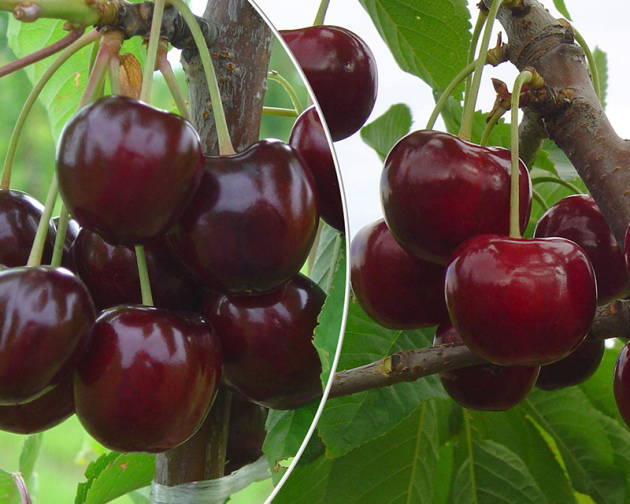
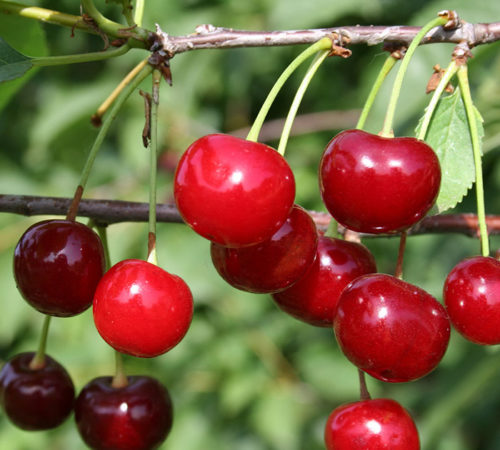
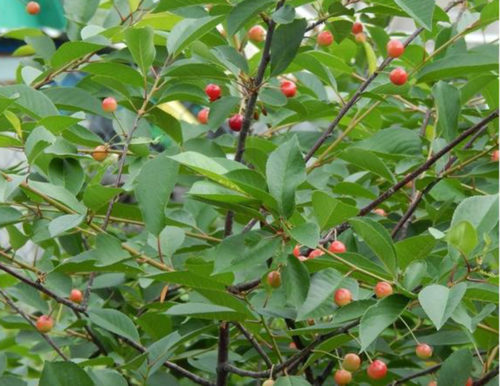
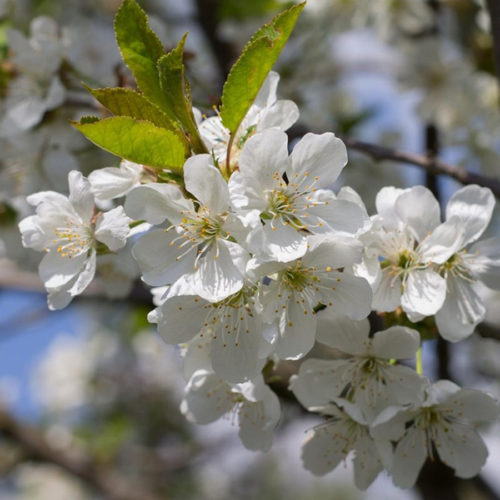
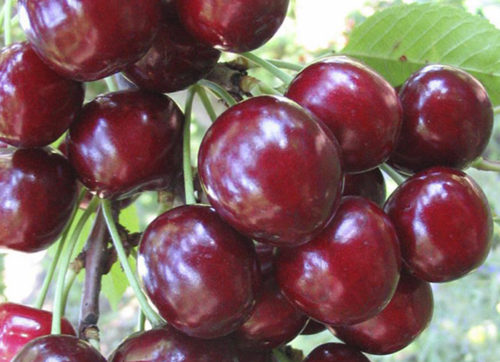


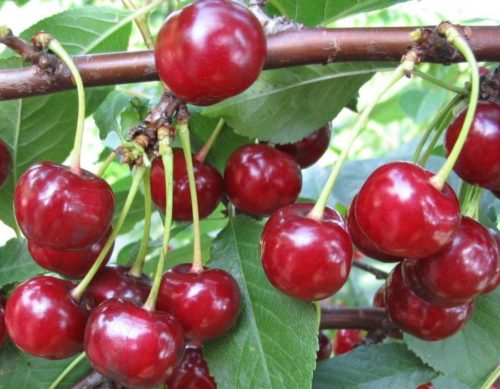
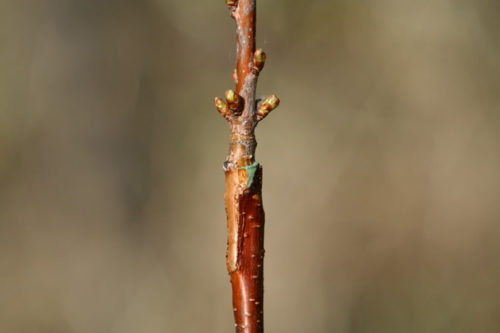
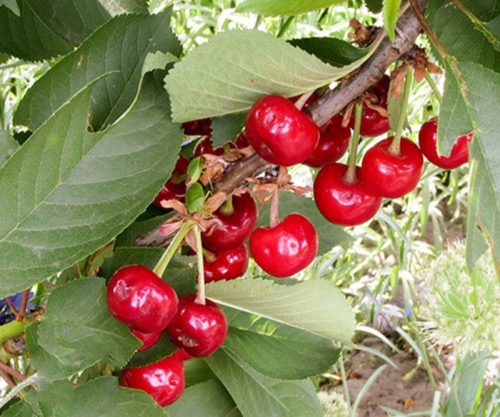
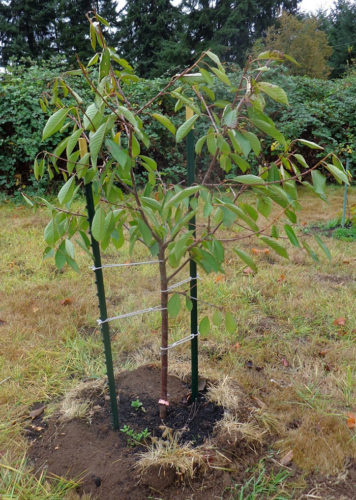
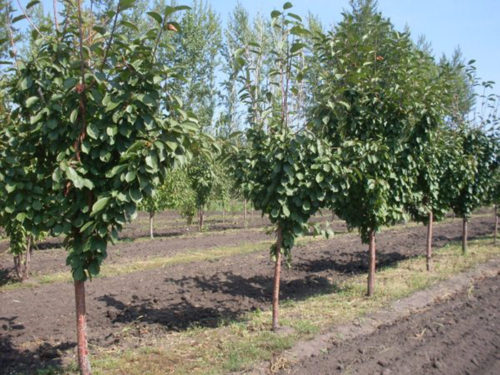
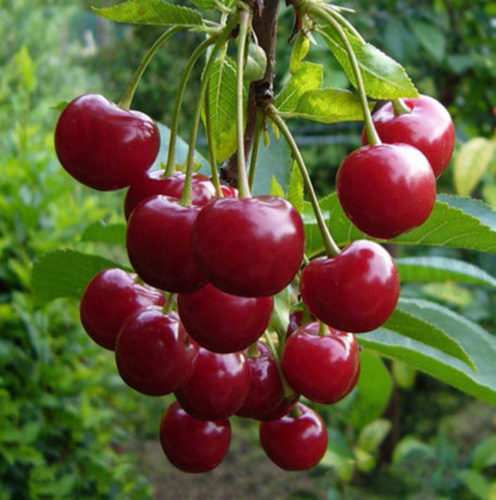
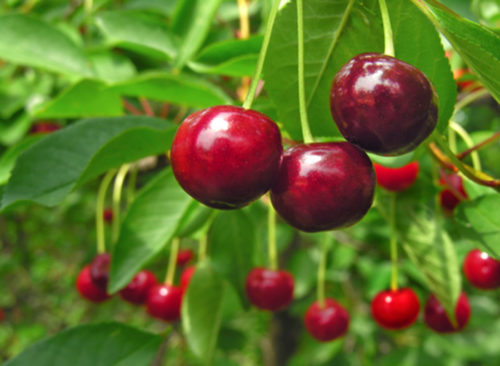
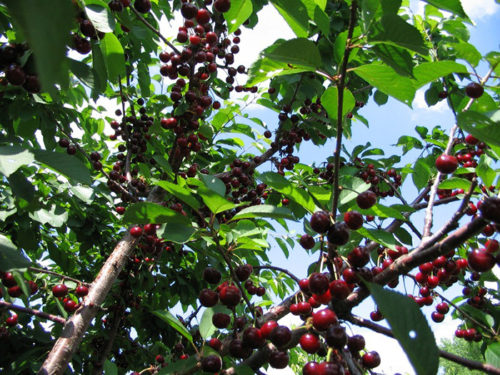
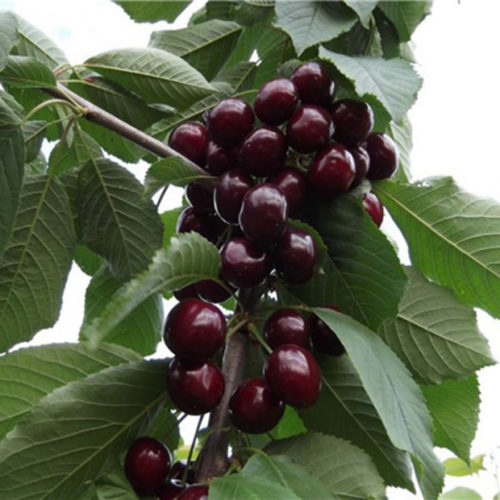












 Start a discussion ...
Start a discussion ...